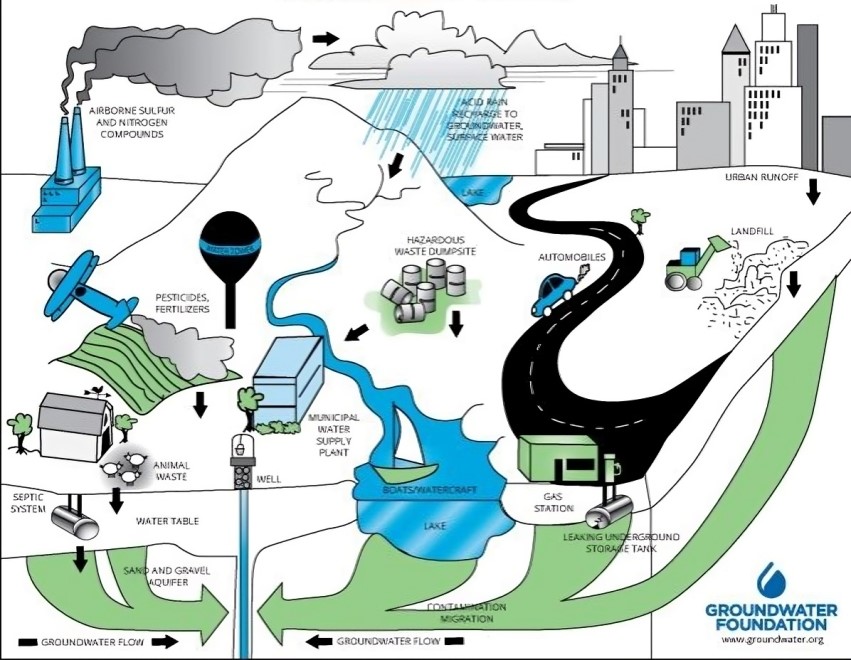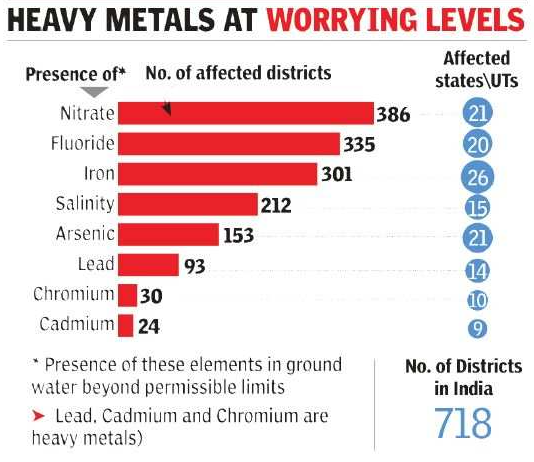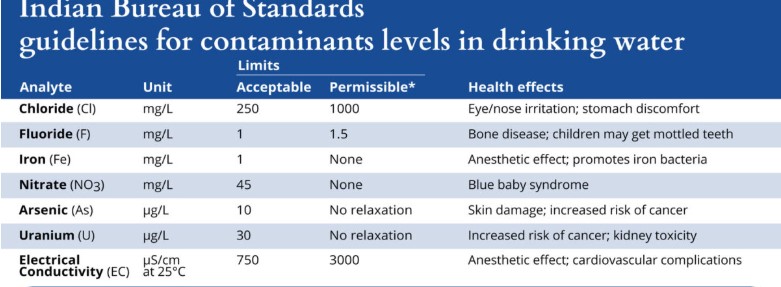Mains: GS III – Conservation, Environmental Pollution and Degradation
Recently, the 2024 Annual Groundwater Quality Report by the Central Ground Water Board (CGWB) reveals more than 20% of samples from 440 districts were contaminated with nitrates and identified groundwater death zones.
Skeletal fluorosis is a debilitating condition that causes joint pain, bone deformities, and stunted growth, particularly in children.

Gangrene is a serious medical condition where body tissues die due to a lack of blood supply.
Geogenic refers to something originating in or caused by geological processes, especially those occurring naturally within the Earth.
Nitrate contamination – It is rampant in northern India and poses a severe threat to infants.
Blue baby syndrome, also known as cyanosis or infant methemoglobinemia, is a condition where a new born baby’s skin appears bluish due to low oxygen levels in the blood.

Nephrotoxicity refers to kidney damage caused by exposure to toxic substances, including certain medications and chemicals.

CPCP – Central pollution control board.
SPCB – State pollution control board.
